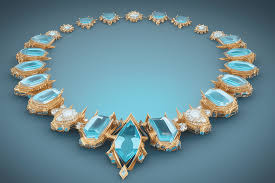
Jewelry design has always been a blend of art and craftsmanship. However, the advent of digital tools has transformed the industry, making design processes more efficient and opening new creative possibilities. Let's dive into how these digital innovations are revolutionizing jewelry design.
Computer-Aided Design (CAD)
- Precision and Detail: CAD software allows designers to create highly detailed and precise designs that are difficult to achieve by hand. It also enables intricate detailing and complex patterns, enhancing the overall quality of the jewelry.
- Visualization: Designers can visualize their creations in 3D, giving them a realistic view of the final product. This helps in making necessary adjustments before moving to production, saving time and resources.
- Customization: CAD makes it easy to customize designs according to client preferences. Changes can be made quickly, and multiple versions of a design can be created to meet specific needs.
3D Printing
- Prototyping: 3D printing enables the creation of prototypes quickly and cost-effectively. Designers can experiment with different materials and forms, iterating rapidly to refine their designs.
- Production: For certain types of jewelry, 3D printing can be used in the final production process. It allows for the creation of pieces that would be impossible or extremely difficult to make using traditional methods.
- Innovation: This technology encourages innovation by allowing designers to experiment with new shapes, structures, and materials without the constraints of traditional manufacturing techniques.
Digital Sketching And Rendering
- Speed: Digital sketching tools allow designers to draw and modify their ideas quickly into top jewelry trends. This speeds up the initial design phase and helps in capturing the creative process more fluidly.
- Flexibility: These tools offer a range of effects and textures that can be applied to the sketches, providing a more comprehensive representation of the final product.
- Collaboration: Digital sketches and renderings can be easily shared with clients and team members, facilitating collaboration and feedback.
Augmented Reality (AR)
- Customer Experience: AR allows customers to "try on" jewelry virtually. This enhances the shopping experience, making it easier for customers to make informed decisions.
- Marketing: AR can be used in marketing campaigns to showcase jewelry in an interactive and engaging way, attracting more customers and boosting sales.
Artificial Intelligence (AI)
- Design Assistance: AI can assist designers by providing suggestions based on current trends and customer preferences. This helps in creating designs that are likely to be popular in the market.
- Efficiency: AI algorithms can optimize the design process by automating repetitive tasks, allowing designers to focus more on creativity and innovation.
Digital Supply Chain Management
- Efficiency: Digital tools streamline the supply chain, making it easier to manage inventory, track orders, and ensure timely delivery. This reduces costs and improves customer satisfaction.
- Sustainability: By optimizing the supply chain, businesses can reduce waste and adopt more sustainable practices, which is increasingly important to modern consumers.
Conclusion
Digital tools are revolutionizing the jewelry design industry by enhancing precision, enabling rapid prototyping, and improving customer experiences. From CAD and 3D printing to AI and AR, these technologies are opening up new possibilities for creativity and efficiency. Embracing these tools not only benefits designers and manufacturers but also provides customers with better products and experiences.
Incorporating these innovations into the jewelry design process is not just a trend but a necessary step towards staying competitive in a rapidly evolving market. As these technologies continue to advance, we can expect even more exciting developments in the world of jewelry design.
FAQs
How does 3D printing benefit jewelry design?
3D printing allows for rapid prototyping and the creation of intricate designs that are difficult to achieve with traditional methods.
Can customers try on jewelry virtually?
Yes, augmented reality (AR) technology enables customers to try on jewelry virtually, enhancing their shopping experience.
How does AI help in jewelry design?
AI assists designers by providing trend analysis, design suggestions, and automating repetitive tasks, increasing efficiency and creativity.
What are the benefits of digital supply chain management in jewelry design?
Digital supply chain management improves efficiency, reduces costs, ensures timely delivery, and promotes sustainability by reducing waste.